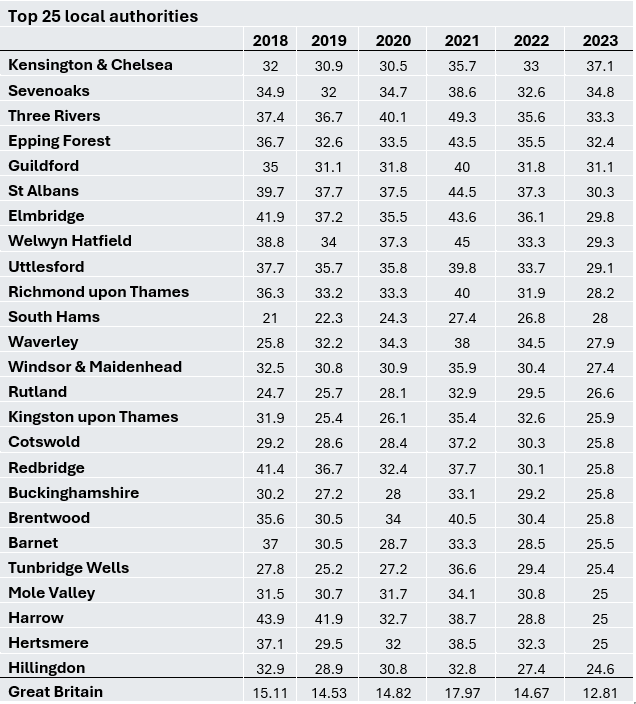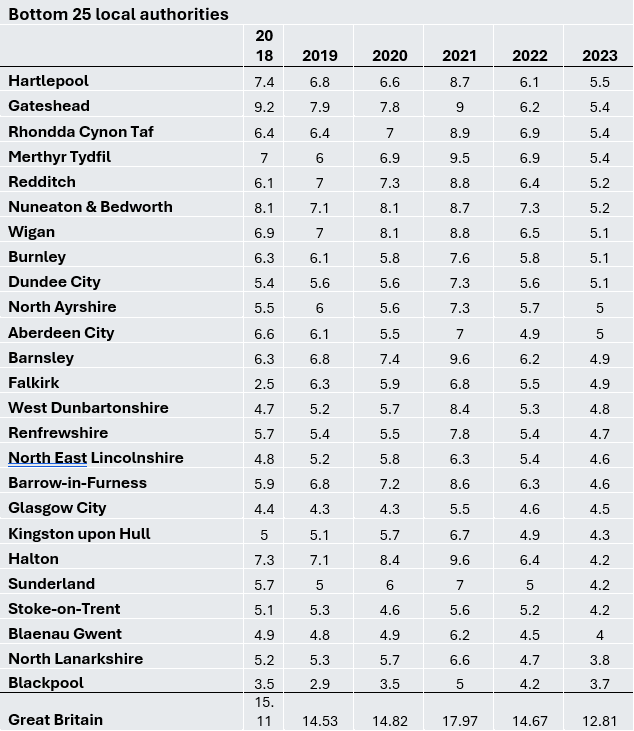Home improvements swapped for green energy upgrades
Contents |
[edit] Homeowners turn to green energy upgrades as home improvement activity declines
- Home improvement applications are 27% down since 2021.
- A desire to reduce energy bills is driving a rise in applications citing solar panels and insulation.
- Wales and the North West see sharpest declines.
Demand for extensions, loft conversions and garden work has fallen dramatically following a post-pandemic boom, as home improvement enthusiasts switch focus to green energy upgrades to reduce bills.
The number of home improvement applications has fallen by 27% overall since 2021 with 2023 seeing the lowest numbers since 2013. The fall follows an unprecedented spike in activity following the pandemic that saw nearly 450k applications in 2021.
The new insight into homeowner spending trends is revealed in a major new study, the Home Improvement Index, launched by data analysts Barbour ABI to monitor activity across the sector.
Barbour ABI consulting analyst, Brian Green said “The build-up of excess savings from reduced spending on holidays and entertainment and the sense of being caged during lockdown generated a surge in home improvement in 2021. That exuberance in the market has now yielded to the downward pressures created by a cost-of-living crisis.”
[edit] Solar and insulation rise to top of wish lists
It is not a story of decline across all spending types. In 2023, there were two and a half times as many applications citing solar panels as in 2019. Insulation is one and a half times higher than in 2019 and 60% up since 2021.
Brian explained: “There has been a swift transition over the past year or so in the motivations for home improvement among households. From a pandemic-prompted eagerness to invest in improving outside space or a home office we have seen households increasingly driven by the cost-of-living crisis.
“It’s clear that a desire to cut household energy bills is driving a shift to green energy solutions. While home improvement applications fell, the number including solar panels is skyrocketing. Insulation is on the up too – people are looking for easy adjustments that they can make to try and bring energy bills under control.
“The upshot is that there are challenges ahead for those working within the home improvement sector. However, there are also opportunities for businesses who can adapt to shifting market trends.”
[edit] Regional variations
The cost-of-living crisis is impacting harder on some regions than others. The regions that saw the biggest drop last year were Wales (-16.8%) and the North West (-14.1%). Low house prices relative to the rest of Britain and recent falls in prices are inevitably inhibiting investment in home improvement in these areas.
Conversely London saw the smallest fall in applications with wealthy areas in the capital such as Kensington and Chelsea seeing applications rise sharply in contrast with lower income areas in the rest of Great Britian.
The Home Improvement Index is now available on Barbour ABI’s website.
[edit] The UK’s Home Improvement hotbeds
London leads the country for home improvements with 20.5 applications per 1000 homes. Kensington and Chelsea rank highest in the country with 37.1 applications per 1000 homes.
Outside of London, the South East remains the UK’s hotbed for home improvement with Sevenoaks and Guildford both ranking in the top five in the country. Households in the South East spend on average £2,582 on alterations and improvements, almost twice as much as both London residents (£1,420) and the UK as a whole (£1,438) according to ONS figures on family spending in the UK.
People living in the North East of England are least likely to be making major improvements to their homes with just 6.8 applications per 1000 homes, followed by Scotland and Wales. No regions in the north made it into the top 5.
[edit] About Barbour ABI
Barbour ABI was founded to support the UK construction industry – helping businesses to sustain and grow. We are the exclusive provider of New Orders Estimates to the Office for National Statistics and partner to the Infrastructure & Projects Authority in providing the National Infrastructure and Construction Pipeline.
As the market leading provider of construction project information, we strive to allow our clients to access the very best, most accurate and up-to-date data on construction projects and the key decision makers that are involved.
Not only do we generate construction project leads, but we also are able to inform the industry of the latest trends and developments using our data to analyse and form a complete picture of the past, present and future.
We consider current affairs and their impact on our industry, where the opportunities and threats lie, and therefore how our clients can future-proof themselves.
Our mission is to provide our clients with the best experience and that the service and product we provide is an extension of their own business and something they can’t do without.
[edit] Related articles on Designing Buildings
- Construction industry revs engines in January.
- Construction contract awards reach 7.1bn in February, their highest level in seven months.
- Green deal home improvement fund.
- Home improvement.
- Home Improvement Report: Homeowners embrace solar panels and insulation as cost-of-living crisis bites.
- Homeowners fear cost-of-living crisis will derail home improvement plans.
- UK Construction saw an 11.1bn fall in spending in 2023.
Featured articles and news
Key points for construction at a glance with industry reactions.
Functionality, visibility and sustainability
The simpler approach to specification.
Architects, architecture, buildings, and inspiration in film
The close ties between makers and the movies, with our long list of suggested viewing.
SELECT three-point plan for action issued to MSPs
Call for Scottish regulation, green skills and recognition of electrotechnical industry as part of a manifesto for Scottish Parliamentary elections.
UCEM becomes the University of the Built Environment
Major milestone in its 106-year history, follows recent merger with London School of Architecture (LSE).
Professional practical experience for Architects in training
The long process to transform the nature of education and professional practical experience in the Architecture profession following recent reports.
A people-first approach to retrofit
Moving away from the destructive paradigm of fabric-first.
International Electrician Day, 10 June 2025
Celebrating the role of electrical engineers from André-Marie Amperè, today and for the future.
New guide for clients launched at Houses of Parliament
'There has never been a more important time for clients to step up and ...ask the right questions'
The impact of recycled slate tiles
Innovation across the decades.
EPC changes for existing buildings
Changes and their context as the new RdSAP methodology comes into use from 15 June.
Skills England publishes Sector skills needs assessments
Priority areas relating to the built environment highlighted and described in brief.
BSRIA HVAC Market Watch - May 2025 Edition
Heat Pump Market Outlook: Policy, Performance & Refrigerant Trends for 2025–2028.
Committing to EDI in construction with CIOB
Built Environment professional bodies deepen commitment to EDI with two new signatories: CIAT and CICES.
Government Grenfell progress report at a glance
Line by line recomendation overview, with links to more details.
An engaging and lively review of his professional life.
Sustainable heating for listed buildings
A problem that needs to be approached intelligently.
50th Golden anniversary ECA Edmundson apprentice award
Deadline for entries has been extended to Friday 27 June, so don't miss out!
CIAT at the London Festival of Architecture
Designing for Everyone: Breaking Barriers in Inclusive Architecture.
Mixed reactions to apprenticeship and skills reform 2025
A 'welcome shift' for some and a 'backwards step' for others.






























